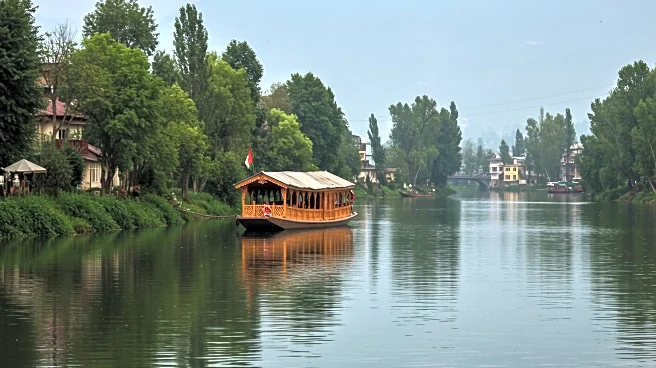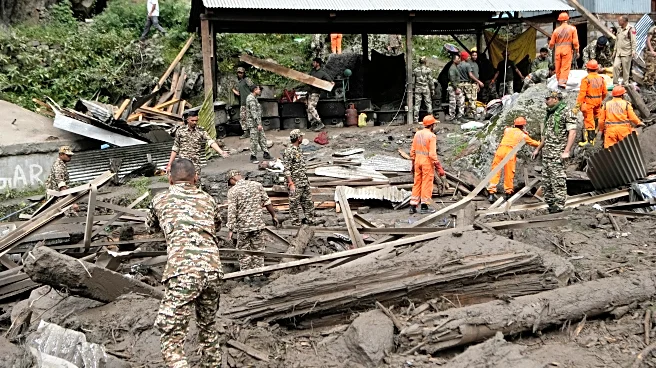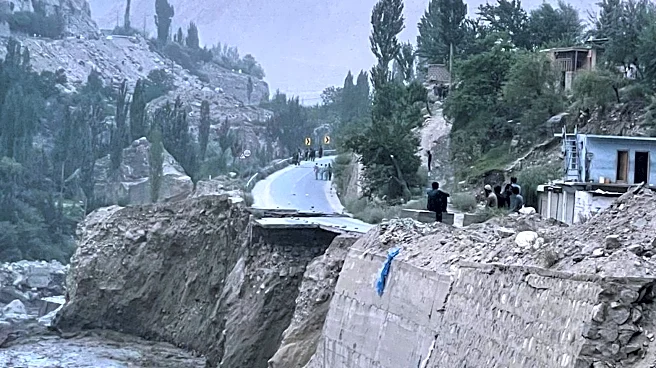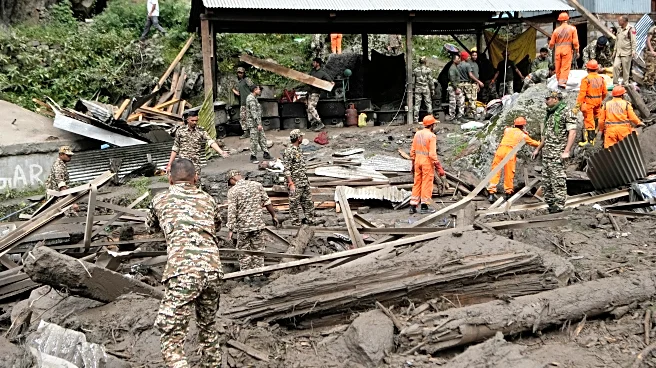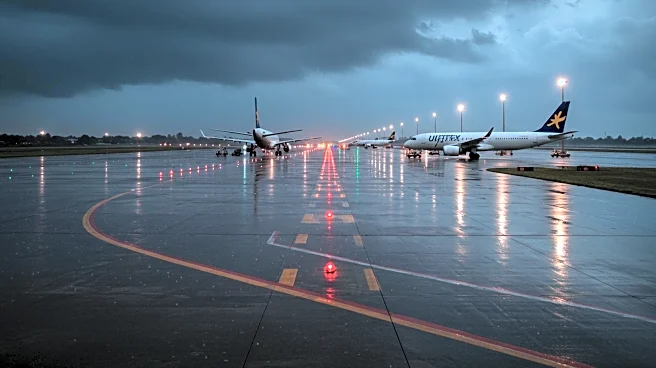What is the story about?
What's Happening?
A flash flood swept through a campsite in north China, specifically in the Urad Rear Banner area of the Inner Mongolia Autonomous region, resulting in the deaths of eight individuals and leaving four others missing. The flood occurred around 10 p.m. local time on Saturday, as reported by Chinese state media. Initially, thirteen campers were reported missing, but by Sunday morning, one had been rescued and eight bodies had been recovered. Search and rescue operations are ongoing for the remaining missing persons. This incident is part of a series of recent flash floods and landslides affecting northern China, including a previous event in the northwestern Gansu province that resulted in at least 10 deaths and 33 missing persons.
Why It's Important?
The flash flood highlights the increasing frequency and severity of extreme weather events in China, which can have significant implications for public safety and infrastructure. Such events can disrupt local communities, lead to loss of life, and necessitate extensive rescue and recovery efforts. The situation underscores the need for improved disaster preparedness and response strategies in regions prone to such natural disasters. Additionally, the impact on popular camping areas may affect local tourism and economic activities, as safety concerns could deter visitors.
What's Next?
Search and rescue operations will continue in the affected area to locate the remaining missing individuals. Authorities may also conduct assessments to determine the cause of the flood and implement measures to prevent future occurrences. There may be increased scrutiny on the safety protocols of campsites in flood-prone regions, potentially leading to regulatory changes. The broader implications of these events could prompt discussions on climate change and its role in exacerbating extreme weather conditions.
Beyond the Headlines
The flash flood incident may raise questions about the adequacy of current infrastructure and emergency response systems in handling such disasters. It could also lead to a reevaluation of land use policies in vulnerable areas, balancing economic development with environmental sustainability. The cultural impact on local communities, who may face long-term disruptions, should also be considered.
AI Generated Content
Do you find this article useful?






